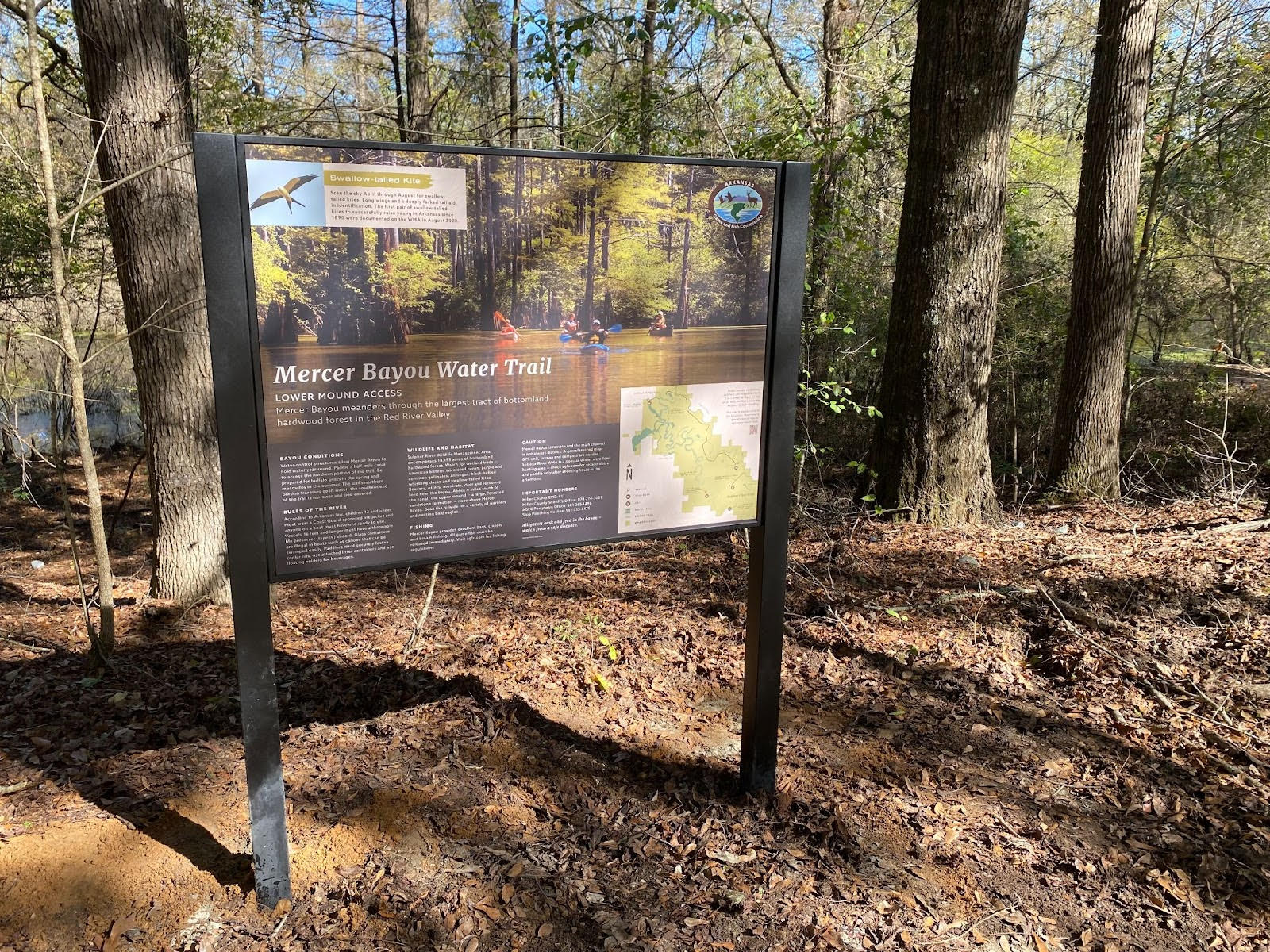FOUKE — Sulphur River Wildlife Management Area is known for its remoteness, but the recent addition of an AGFC water trail and birding trails makes the area more accessible for outdoor enthusiasts.
By Kirsten Bartlow,
AGFC Watchable Wildlife Program Coordinator
The 18,155-acre area in Miller County is the largest remaining tract of bottomland hardwoods in the Red River Valley of Texas, Oklahoma, Arkansas and Louisiana. Access to the WMA is limited, except by boat. For those searching an escape in a serene setting and a touch of adventure, it’s worth the effort.
“Sulphur River is unique because of its continuous bottomlands, remoteness and limited access,†Cameron Tatom, an AGFC biologist, said. “It can test any hunter’s skill and dedication in their pursuit of their chosen game. It is also a great place for a paddling or wildlife-watching day trip. It presents opportunities for an outdoorsman of any skill level to explore the wild.â€

Mercer Bayou Water Trail
The newly designated Mercer Bayou Water Trail meanders 14 miles along the old river channel on the west side of the WMA. Water control structures allow the bayou to hold water year-round and paddlers may choose from three access points. Fourteen miles is a long stretch on flat water, so paddlers may choose to park and paddle – put in at any of the access points and paddle out and back.
A half-mile canal offers access to the northern portion of the trail, which traverses open water while the southern end of the trail narrows, meandering through trees. Key turns have trail markers, but otherwise, the trail is not marked. Download a georeferenced map to follow the trail route.
Approximately four miles south of the canal boaters will witness a large, forested sandstone formation, known as the upper mound, rising above the bayou. Be sure to scan its wooded hillsides for migratory songbirds and nesting bald eagles.
Some large alligators lurk in the area’s watery habitat and the WMA is one of a few where a lucky hunter can draw a permit for the public-land alligator hunt each September. Paddlers should keep a safe distance from gators.
Birding Trails
A tremendous variety of songbirds and wetland birds thrive on Sulphur River WMA. Roads closed to vehicular traffic offer prime wildlife-viewing opportunities and three have been designated birding trails.
Canal Birding Trail:
Enjoy a one-mile-out-and-back path along a levee to Mercer Bayou. Be on the lookout for wading birds and waterfowl. Scan the skies for swallow-tailed kites along with a host of other birds of prey.
Henry Moore III Waterfowl Rest Area Birding Trail:
Walk along a one-and-a-half-mile-out-and-back gravel levee road. Two moist-soil units – managed wetlands – provide critical feeding and resting habitat for migrating waterfowl, wading birds and shorebirds.
River Road Birding Trail:
Hike along a gated road that traverses northwesterly 6 miles. A variety of warblers, woodpeckers and other songbirds flock to the trail’s bottomland habitat. American and least bittern can be spotted on the road.
Plan Accordingly
Paddlers and birders should plan their visit. Navigate the sprawling WMA with more confidence by downloading free georeferenced maps prior to a visit.
Waterfowl hunting is popular on Sulphur River WMA during fall and winter. Paddlers should wait until after shooting hours (mid-day) to take to the water during waterfowl season. Also, be aware that the Henry Moore III Waterfowl Rest Area Birding Trail is closed November 1 to February 15. This managed wetland provides a safe haven for migrating waterfowl, wading birds and shorebirds.
The area’s birding trails are mowed infrequently – be prepared with sturdy shoes and bug spray. Birding opportunities change with the seasons. Check out eBird’s checklist for the area before visiting and target waterfowl, wintering songbirds and raptors in the fall and winter, while spring and summer bring warblers, gallinules, bittern and herons. Be sure to scan the skies April through August for swallow-tailed kites. Documentation of breeding kites in 2020 generated excitement because the WMA is out of the bird’s established range.
“Other†Resident Wildlife?
A trip to Sulphur River WMA is not complete without wandering into Fouke – a town of about 800 people in Miller County – widely known for one of America’s most popular legends – the Fouke Monster.
The town drew press in May of 1971 when a local resident reported he was attacked at his home by a human-like creature. The story took off in 1973 when director Charles B. Pierce – an adopted Arkansan – released “The Legend of Boggy Creek,†a low-budget film shot in a documentary style in and around Fouke.
The Fouke Monster, sometimes called the Boggy Creek Monster, has become the South’s version of Sasquatch. Numerous films, television programs, articles and books have been produced about the beast. Swing by Monster Mart on Highway 71 for a snack, souvenir and some fun local lore.
Visit www.agfc.com/things-to-do/water-trails to learn more about Mercer Bayou Water Trail and other great paddling destinations in The Natural State.





